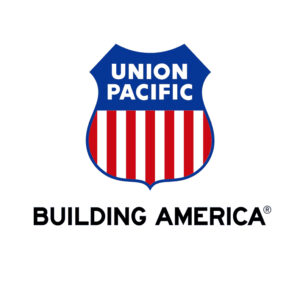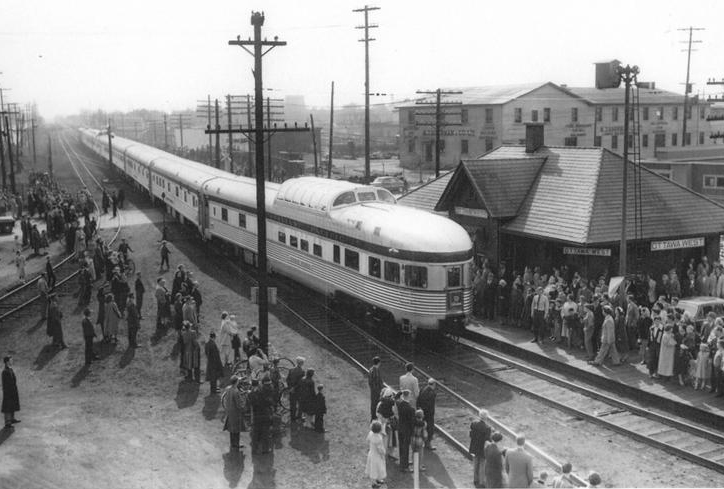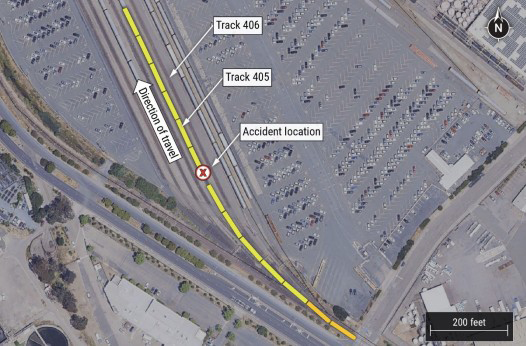 LOS ANGELES — Union Pacific, the Port of Long Beach, and the Utah Inland Port Authority have announced the launch of direct rail service between the Long Beach and Utah facilities to help address ongoing port congestion.
LOS ANGELES — Union Pacific, the Port of Long Beach, and the Utah Inland Port Authority have announced the launch of direct rail service between the Long Beach and Utah facilities to help address ongoing port congestion.
The executive directors of the two facilities, Mario Cordero of Long Beach and Jack Hedge of the Utah authority, said in a joint statement that the direct, regularly scheduled service “will allow cargo destined for all of the Intermountain West to be rapidly evacuated from terminals in Long Beach to Salt Lake City for further distribution throughout the region. Much of this cargo traditionally moves to Utah, Colorado, Nevada, and Idaho by truck, and thus must be removed from the port terminals one container at a time. Reengaging this direct rail service will allow removal of blocks of containers at a time.”
Cordero also said the agreement immediately reduces pressure on terminal storage, gates, chassis, and the local drayage community on the coast. … It’s a major step forward for exporters from the region.”
Hasan Hyder, Union Pacific’s general director of intermodal, said in a press release that the railroad’s Salt Lake City facilities “offer a perfect relief value for some of the current port congestion and open a new world of services for companies across the region.”
The Utah authority has also announced its participation in the Intelligent Crossroads Network, a private 5G and artificial intelligence network. Developed in partnership with Quay Chain Technologies, the network will allow cargo tracking, monitoring, and planning. Hedge said the two ports agree current supply-chain issues reveal the need for “new ways of doing business and solutions that combine exsiting resources and new technologies. The ICN allows for the most digitally connected logistics experience possible in the supply chain.”














A big missing detail of the logistics shortage is not only truck drivers, but CA politics. Only rigs built after 2010 (in the name of climate change and less polution) may operate in CA! This severely limits the number of trucks and drivers using the port.
So, I would expect UP’s move will in the long run work. Local drivers can deliver more than one container a day to the final destination.
I was sent an article today that was shocking but yet telling. Seems there is a law in Long Beach that prohibits the stacking of more than 2 empty containers. So trucking firms were keeping the empties on the chassis so they could store more in a yard to bypass the regulation. Seems there are hundreds of acres of vacant land in the LA basin storing, you guessed it, empty containers sitting on a chassis.
But this causes a chassis shortage. The cranes on the docks were running at only 10% because there was no where to place the full containers. Truckers couldn’t return empty chassis because of the stacking regulation in Long Beach. So none of the new containers could get transloaded for drayage.
Honest to God, a guy from a logistics firm rented a tour boat and provided a blow by blow account using Twitter on the issues as he toured the port facility. Even though he didn’t have to take the tour, he did it to emphasize how moronic the regulations had gotten. He didn’t blame anyone specifically, he simply went down the chain of movement and described the bottlenecks (several) at the port, the railroads, the trucking firms, the regulations, etc.
After his tweets reached 33k retweets, the California’s governors office (Gavin Newsom) started getting flooded with calls demanding that he get Long Beach to rescind the 2 container rule for 120 days. Finally the governor’s office tweeted out that Long Beach had rescinded the rule and to stop calling his office please.
This is another reason UP finally just started loading them up and sending them to Salt Lake City. An absolute lack of any chassis to dray out the containers from the LA Basin.
A classic case of multiple parties not talking to each other to solve a problem. Finally the guy simply started Tweeting it out and copying everyone.
The idea that freight has to move one container at a time from these ports to locations hundreds of miles away is absurd at any time. When there’s a truck drive shortage even more so. Of course, there’s a reason why it happened – rail companies lost their vision years ago, and forgot such things as customer service.
Now there’s a chance to start anew. If the big railroads can efficiently and quickly get freight out of the ports and MOST of the way (so few companies have rail access anymore), and work closely with local truckers to do the ‘last mile’ well, they can be a huge help in cleaning up this mess and reducing pollution. But the railroads have to get it right. It’s got to be faster, and economical, and they have to play well with local truckers and in switching freight to other railroads to move it forward where needed. One train, with one or two crew members, can carry what, a couple hundred containers, or more, compared to one trucker toting one container. This should be a no brainer. And it shouldn’t be limited to one spot in Utah.
As usual, railroads wake up behind the 8 ball.
Funny oxymorons:
Government “worker,”
Customer “service,”
Railroad “management.”
Not sure who these news releases are sent to / read by besides Trains, shippers, local outlets in SIC and Long Beach. In all the news coverage of the logistics backup I have watched there has been no mention of rails part in the logistics. Looks like an opportunity for the class 1’s and AAR to get the word out on the steps they are taking to clear the jam.
Yep, we could probably all think of a few more inland terminals that need to be re-opened and or expanded. The push for Port, Railroads and shippers all trying to get bigger and consolidated facilities look great on paper and balance sheets until they need to move volume to multiple.
..
On top of it, the whole idea of sending a truck from Port of Long Beach to say Las Vegas and or Salt Lake or as John note, put it on a train from say Savannah to Chicago only to truck back east is mind blowing. Put the box in well car at the port, block a set of cars to the desire city, and send the blocks onto Las Vegas, Salt Lake and then onto Denver. You think BNSF or UP would want that biz instead of giving it away to truckers.
..
That doesn’t account for the whole trucking situation which is in part self inflicted First, they are all stumbling over themselves to make sure a trucker stays at a terminal for hours on end to get a chasis let alone a box. Stays even longer if driver has his own private chasis. The fact that drivers are spending anywhere from 6-8 hours in a terminal is even more mind blowing. Then everyone claims that their is a driver shortage. Some corporate exec needs to go sit in a truck for 8 hours without getting a dollar, then do it the next day, and then do it the next day. Some of our most highly paid people are certainly not smarter then the truck driver and are certainly not solving problems. They are just an indication of how upside down things are getting.
Timothy,
Your idea to have a corporate exec go sit in a truck for 8 hours applies to railroad management, as well.
North Baltimore does come to mind.
Mr. Rice, wasn’t CSX’s North Baltimore yard an inland logistics center? Closing that doesn’t seem logical now.
If there is a national truck driver shortage, the delay in getting drayage simply moves to SLC from Long Beach. I understand it will clear the docks faster, but you are simply pushing the problem 600 miles further inland. Cracks me up that shippers have to dray all the way to Idaho from Long Beach. I am sorry, but this reeks of railroad inefficiency.
Why cant CSX do the same? Instead of forcing Michigan, Indiana and Ohio shippers to dray all the way from Chicago, work out a similar arrangement by having containers pre-blocked at west coast ports for an inland logistics center, where it doesn’t have to navigate that logjam called Chicago?
“…for an inland logistics center” – like, idk, North Baltimore? You know, the place they spent, what, $250 million on? It’s a stranded asset in its current form, as this CSX shareholder sees it.
And I agree – trucking cans from Long Beach all the way to Idaho? Colorado? Utah? Utterly ridiculous. There is no earthly reason why that traffic should not have already been moving by rail…other than UP’s intransigence in handling it. “Not enough revenue” would be their excuse…
Is there also enhanced drayage capacity at the SLC facility? Are there increased costs per container for the shift to SLC? Transload capability?